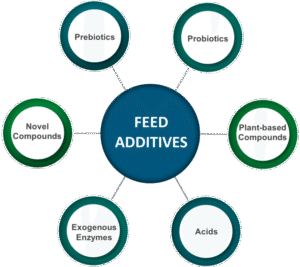Biogeochemical cycles are the pathways through which essential elements and compounds such as carbon, nitrogen, phosphorus, sulfur, and water move through the Earth’s various systems, including the atmosphere, hydrosphere, lithosphere, and biosphere. These cycles play a critical role in regulating the availability of nutrients and sustaining life on Earth. Here’s an overview of some key biogeochemical cycles:
Thank you for reading. Don't forget to subscribe & share!
- Carbon Cycle: The carbon cycle describes the movement of carbon atoms through the atmosphere, biosphere, hydrosphere, and lithosphere. Key processes include photosynthesis (carbon uptake by plants), respiration (carbon release by living organisms), decomposition (carbon release by decaying matter), and combustion (burning of fossil fuels). Carbon is essential for the structure of organic molecules and is central to energy transfer in ecosystems.
- Nitrogen Cycle: The nitrogen cycle involves the movement of nitrogen between the atmosphere, living organisms, and the soil. Nitrogen fixation by certain bacteria converts atmospheric nitrogen (N2) into ammonia (NH3), which is used by plants. Nitrification converts ammonia to nitrites and nitrates. Denitrification returns nitrogen to the atmosphere. Nitrogen is essential for the synthesis of proteins and nucleic acids.
- Phosphorus Cycle: The phosphorus cycle describes the movement of phosphorus through the lithosphere, hydrosphere, and biosphere. Phosphorus is released from rocks through weathering, taken up by plants, and transferred through the food chain. Unlike carbon and nitrogen, phosphorus doesn’t have a significant atmospheric component. Phosphorus is a key component of DNA, RNA, and ATP (adenosine triphosphate).
- Sulfur Cycle: The sulfur cycle tracks the movement of sulfur in the form of sulfate, sulfide, and other compounds. Sulfur is cycled through the atmosphere, lithosphere, hydrosphere, and biosphere. Processes include microbial sulfate reduction, volcanic emissions, and industrial activities. Sulfur is an essential component of amino acids and vitamins.
- Water Cycle (Hydrologic Cycle): The water cycle (hydrological cycle) is the continuous movement of water between the atmosphere, hydrosphere, and lithosphere. Processes include evaporation, condensation, precipitation, runoff, and groundwater flow. Water is essential for all life and plays a critical role in shaping Earth’s landscapes and climate. These biogeochemical cycles are interconnected and interdependent. They regulate the distribution and availability of essential elements and compounds, which, in turn, influence ecosystem dynamics, climate, and the overall sustainability of life on Earth. Human activities, such as deforestation, fossil fuel combustion, and agricultural practices, can disrupt these cycles, leading to environmental challenges and imbalances. Understanding and managing these cycles are essential for sustainable environmental stewardship.









